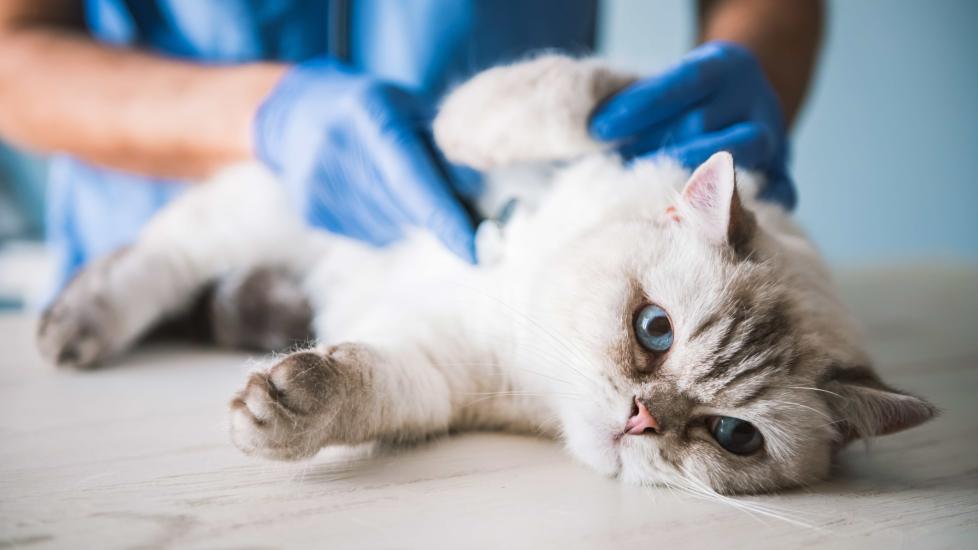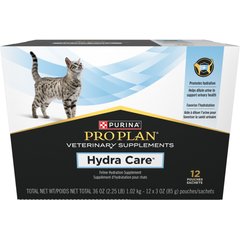Edema in Cats
If your vet has mentioned the term edema, you’re probably wondering what it is and what you can do to help your cat feel better.
It’s important to understand the difference between swelling and edema. Swelling is a more general term, and many things can cause swelling in cats. For example, bleeding under the skin may cause swelling, but this isn’t edema. Edema is a specific type of swelling that develops when an abnormal amount of fluid collects in the spaces between cells in a tissue. This fluid is mostly water.
Edema can affect almost any tissue in the body, but the most commonly diagnosed types of edema are:
-
Cerebral edema: Edema affecting the brain
-
Pulmonary edema: Edema affecting the lungs
-
Peripheral edema: Edema that is usually easiest to see in a cat’s legs
Causes of Edema in Cats
Wherever edema is located in a cat’s body, it usually shows up through one or a combination of these four things:
-
Low albumin levels in the blood. Albumin is a protein that helps hold water inside blood vessels.
-
Increased blood pressure pushes water out of the veins.
-
Blockage of part of the lymphatic system causes water to flow into tissues.
-
Inflamed blood vessels get leaky. Inflammation is often caused by infection or immune-mediated diseases.
Many of the causes of edema in cats are very serious. Possible causes include:
-
Heart disease: The normal flow of blood can be slowed by heart disease, which leads to fluid leaking out of blood vessels. High blood pressure is also common with some types of heart disease in cats.
-
Liver disease: The liver makes albumin, and advanced liver disease can lead to low blood albumin levels.
-
Kidney disease: Cats with kidney disease may lose albumin in their urine.
-
Systemic infections: Bacterial, viral, fungal, and other infections can make blood vessels inflamed and leaky.
-
Some types of drugs and cat toxins, such as acetaminophen, can lead to edema through liver damage, inflamed blood vessels, or other processes.
-
Gastrointestinal disease or dietary deficiencies: Adequate protein intake, digestion, and absorption are necessary to keep albumin in the blood at normal levels.
-
Allergic reactions and autoimmune diseases: Inflammation associated with these conditions can make blood vessels leaky.
-
Trauma: Injuries, along with the inflammation that often follows, can damage tissues and make blood vessels leak fluid.
-
Snake bites and insect bites or stings: Stings and bites often create inflammation that makes blood vessels leaky.
-
Obstruction of veins or the lymphatic system: Anything that presses on a vein or lymphatic channel (such as a tumor) increases pressure inside the vessel, causing it to leak fluid.
-
Electrocution: Electricity running through a cat’s body damages blood vessels and other tissues.
Vet Recommended Health Support
- Feliway Optimum Enhanced Calming 30 Day Diffuser for Cats$29.99Chewy Price
- Purina Pro Plan Veterinary Diets FortiFlora Powder Probiotic Digestive Supplement for Cats, 30 count$30.99Chewy Price
- Purina Pro Plan Veterinary Diets Hydra Care Liver Flavored Liquid Supplement for Cats, 3-oz pouch, case of 12$14.99Chewy Price
- Purina Pro Plan Adult Sensitive Skin & Stomach Lamb & Rice Formula Dry Cat Food, 7-lb bag$28.08Chewy Price
Symptoms of Edema in Cats
The symptoms of edema depend on where the edema is located and how severe it is.
-
Cerebral edema interferes with normal functioning of the brain. Cats with cerebral edema are often mentally dull and may become comatose. They can also be weak or blind and have seizures.
-
Pulmonary edema disrupts the ability of the lungs to move oxygen and carbon dioxide in and out of the bloodstream. Symptoms of pulmonary edema can include difficulty breathing, rapid breathing, inability to exercise, coughing, and blue-tinged mucous membranes.
-
Peripheral edema often makes a cat’s legs and feet swell. If you press on the tissue, it will “pit,” meaning an indentation will remain visible for several seconds. Peripheral edema is usually not painful, but it can make cats stiff and a little uncomfortable.
Other symptoms are often related to the underlying disease that’s causing a cat’s edema. For example, burns may be evident in a cat’s mouth if they’ve chewed on a live electrical cord. The extra fluid held in a cat’s tissues may also lead to increased body weight.
Get to the veterinarian immediately if your cat is showing signs of brain dysfunction (they are mentally dull, for example), is having trouble breathing, or has severe peripheral edema (swelling in the legs), even if you need to go to an after-hours emergency clinic.
Make an appointment with your regular veterinarian if your cat has mild peripheral edema but seems to feel fine otherwise.
How Do Vets Diagnose Edema in Cats?
The doctor will ask when you first noticed the edema, how it’s been changing over time, and other symptoms you’ve seen at home. They will also perform a physical examination to determine what might be going on. For example, the doctor will listen to your cat’s heart. If they hear something abnormal, heart disease becomes a likely cause of your cat’s edema.
Diagnostic testing is also often necessary to determine the reason behind a cat’s edema. Your veterinarian may want to run a complete blood cell count, a blood chemistry panel, a urinalysis, fecal examinations, tests for common infectious diseases, X-rays, ultrasounds, tissue biopsies, CT scans, MRIs, and blood pressure testing.
Treatment for Edema in Cats
Treatment is usually directed toward the underlying cause, but the edema itself may also need to be managed if it has significant adverse effects on your cat’s well-being.
Cerebral edema is often treated with mannitol injections, which can draw fluid back into blood vessels and reduce brain swelling. Cats will be hospitalized until their condition is stable, and they may also receive oxygen therapy, corticosteroids, medications to control seizures, or other forms of symptomatic or supportive care.
Cats with pulmonary edema often need oxygen therapy and diuretics (such as furosemide) to stabilize their condition. Severely affected cats may need to be hospitalized until they are doing better, but in mild cases, treatment may start at home.
Peripheral edema usually doesn’t require direct treatment since it isn’t life-threatening. Diuretics like furosemide may help reduce it while therapy aimed at the underlying cause takes effect.
Recovery and Management of Edema in Cats
Some causes of edema in cats can be treated quickly and successfully. For example, bacterial infections typically resolve with appropriate antibiotic therapy, and benign tumors can often be surgically removed.
On the other hand, many other causes of edema in cats, like heart and kidney disease, are chronic and progressive in nature. With treatment, the cat’s edema and other symptoms may improve for a while, but euthanasia often becomes necessary when the cat’s quality of life can no longer be successfully maintained.
Talk to your veterinarian to determine your cat’s prognosis and the best way to treat and manage their edema.
Featured Image:VadimGuzhva




